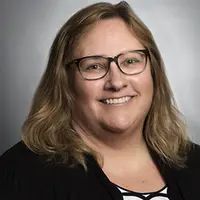The classic image of African agriculture is a farmer—usually a woman—turning the soil with a traditional hoe or pounding dried grain with a stick to release it from the stalk. I find myself grabbing my lower back just thinking about such painful work.
After the soil is prepared by removing weeds, the woman plants the seeds, usually by hand, with children following behind, stamping down the soil. They do this to cover up and care for the seeds—those essential vessels of promise that can mean life or death, prosperity or poverty for the farmer’s family. When the crop is mature and ready for harvest, laborers handle each stalk to separate the kernels from the stalk, in an intimate process of pounding and winnowing.
Throughout the international agriculture community, there is widespread agreement that basic production practices like these can be improved, and that this will mean introducing agricultural mechanization into the equation.
From a Gift to an Asset
Have you ever heard of a “tractor graveyard”? It’s the phenomenon that results after an act of goodwill or maybe an effort to sway voters using tractors, which have long been seen as the ultimate “gift” in some rural areas. Throughout my career, mostly spent in West Africa, I’ve witnessed these fascinatingly grotesque sites dozens of times. Each time, it’s forced me to ask myself, If tractors are so valued and so useful, why do you see them sitting abandoned in a field, stranded along the side of the road, or parked inside government lots collecting dust and rust?
This creates a challenge for those of us in agricultural development. On the one hand, we know that mechanization is needed to improve lives and incomes. On the other, we routinely witness its failure in the haunting monuments to the botched attempts of the past. How, then, do we make machines work for the poor?
Senegal has provided me with some potential answers. It’s there that RTI has been part of a transformation to agricultural mechanization over the past five years. Along the rice-producing Senegal River Valley, tractors had been in operation for decades, but the business model wasn’t quite right. Tractors that had been provided by the government or donors seemed to fall into the hands of anyone but the farmers who needed them—a village leader, a government official, an NGO. Those recipients did not always have the business acumen to keep the tractors running.
Wavering between a privilege and a gift, the use of the donated tractors became contentious, as all too often only those with connections could get access to them. In the meantime, the tractors fell into disrepair and ultimately were left in place, with farmers forced to farm around the rusty albatross.
A breakthrough came in 2014. With support from the United States Agency for International Development’s (USAID’s) Development Credit Authority, a Senegalese leasing-financing company called Locafrique developed an innovative lease-to-buy program, allowing private machine operators to acquire substantial farm equipment such as tractors and combine harvesters.
This model of leasing—as opposed to buying—has allowed small and medium-sized enterprises and machine operators to expand their services. Now, they can secure modern and highly productive farm equipment, with the leasing company providing long-term financing and maintenance support.
The benefits in Senegal have been twofold: While producers and other value chain actors are improving their practices, Locafrique’s lease-to-buy model has created a new service-provider sector that is also helping to grow Senegal’s economy. The company has even begun diversifying its activities to include additional machines and is expanding its portfolio to new regions such as Senegal’s central ground-nut and maize production zones in the Saloum. To date, Locafrique has financed close to US$20 million in agricultural machinery to support rice production in Senegal.
Locafrique’s model has thus far focused on “big-ticket” items like tractors that target large-scale farmers as clients. But our work in Senegal has shown that there’s also a market for such a model for small-scale producers who rely on more basic seeding and tillage equipment. To address this need, USAID supported a collaboration between a Senegalese national farmer organization to develop a long-term financing program to make smaller farm equipment available to farmer cooperatives. Under this program, farmer cooperatives can finance the acquisition of small equipment to be shared by their members, which otherwise would not meet standard leasing terms. This “Grand-Scale Diffusion” program resulted in nearly 150 farmer groups in the Saloum region acquiring US$146,000 in production and processing equipment using bank credit, without a subsidy.
Linking Farmers to Success
The emergence of agricultural mechanization has boosted the quality and competitiveness of rice produced in Senegal, largely through the efforts of thousands of smallholder rice farmers, capturing a US$50 million market share against rice imports. Along with improved contracting methods that link producers and millers with finance, it has also helped Senegal make significant progress toward its goal to become self-sufficient in rice production.
When done thoughtfully and through local systems, mechanization can work to increase food security and reduce poverty in rural areas in a sustainable way. From small-scale farm equipment, to tractors, to massive combine harvesters, the business of agricultural mechanization is more realistic now than ever before.

